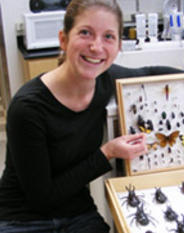
http://www.umn.edu/urelate
612-624-6868
spring 2016 Colloquia
Thursdays, 4:00 - 5:30 pm, Elliott N119
Computation panel: Dave Redish, Andrew Oxenham and Geoff Ghose
Introductory questions:
- What are you studying/what questions are you asking in your lab?
- What got you interested in those questions and/or what got you to where you are as a researcher?
- What kinds of techniques do you use in your research? What makes those techniques and methods well-suited to the questions you're asking?
- What are the strengths of those methods? What are the weaknesses of those methods, and what do you do to compensate for them?
Computational questions:
- What does "computational" mean to you, and how is your research computational?
- How is computational research unique in what questions it asks and how it goes about answering them? In other words, what makes computational research computational?
- How does computational research fit within the larger field of the cognitive sciences?
- What does computational research allow that other methods don't?
- What are some of the things that are hard for computational research to address/answer, and how you work around that?
- How have computational methods been influenced (whether limited or advanced) by technological advances vs. how much do you think they have driven and inspired those advances?
- What do you see as the future of computational research? Where do you see it going? In 5 years? In 10? In 20?
Benoit Bardy, Institut Universitaire de France and EuroMov, University of Montpellier
"AlterEgo: New human-artificial agent interactions to enhance social competence in patients suffering from social deficits"
Schizophrenia, autism, or social phobia are typically accompanied by social interaction deficits. The objective of the AlterEgo european project is the creation of a flexible interactive cognitive architecture, implementable in various artificial agents, allowing a continuous interaction with patients suffering from social disorders by virtue of changes in behavioral (robot-based) as well as morphological (avatar-based) properties of that agent. In this presentation, I will present the scientific foundations of the AlterEgo project and its main predictions, grounded in the Similarity concept, originating from Neurosciences, Robotics, and Social Sciences. I will present the main results of the project, which show that patients functionally adapt their social motor interaction when they interact with agents (real or artificial) morphologically and behaviorally similar to them, as a route toward more natural interactions. These results have consequences for the implementation of digital cognitive architectures in the clinical context, and for the rehabilitation of socially deficient patients.
More information about the AlterEgo project at www.euromov.eu/alterego
Suggested readings:
- Bardy BG, Salesse RN, Gueugnon M, Zhong Z, Lagarde J, Marin L (2014) Movement similarities and differences during social interaction : The scientific foundation of the ALTEREGO European project., (600610), 772–777.
- Zhao Z, Salesse RN, Gueugnon M, Schmidt RC, Marin L, Bardy BG (2015) Moving attractive virtual agent improves interpersonal coordination stability. Hum Mov Sci, 41, 240–254. doi:10.1016/j.humov.2015.03.012
 February 18
February 18
Dustin Meriwether, Psychology
"One Hard Turn Begets Another: Sequential Difficulty Effects on Task Performance"
Research on difficulty has shown that difficult tasks tend to be performed less quickly and accurately than easy tasks, but recruit more neural activity and tend to be better remembered. In sequential paradigms, performance tends to be hindered following a difficult trial, at least when the difficulty is known to rely on a cognitively taxing strategy. In a series of studies, we examined sequential difficulty effects on tasks that do not rely on such strategies and where difficulty is argued instead to be a factor of the stimuli and how they are processed. Results indicate that the nature of the task dictates how performance on the subsequent trial will be affected, with difficulty benefitting performance on subsequent trials if the task is simple and presumably relies on attentional processes, but hindering performance on subsequent trials for tasks that are more involved and rely on more high-level processes.
Suggested readings:
- Dreisbach, G., & Fischer, R. (2011). If it's hard to read…try harder! Processing flulency as a signal for effort adjustments. Psychological Research, 75, 376-383
- Schneider, D. W., & Anderson, J. R. (2010). Asymmetric switch costs as sequential difficulty effects. The Quarterly Journal of Experimental Psychology, 63, 1873-1894
Angus MacDonald, Psychology
"Am I Paranoid Enough? Trust, Psychosis, Functional Connectivity & Even Religion"
Dave Redish, Neuroscience
"The Cognitive Neuroscience of Neuroeconomics"
Abstract
Life is about balancing rewards and costs. If we want to understand the decision process, we need to find a way to reveal the preferences to test (and manipulate) the neural systems underlying it. Bringing together general computational analyses of decision processes and specific neuroeconomic tasks in rodents, we will examine the underlying neurophysiology that drives economic decisions, beginning the explanation of why "supposedly irrelevant factors" are highly relevant to decision-making. I will also discuss the relationship of these discoveries to normative models and implications for psychiatry and policy.
Gregory Trevors, Education
"Beliefs, Emotions, and Learning about Controversial Science Knowledge"
Beliefs about the nature of knowledge and knowing — referred to as epistemic beliefs — are becoming increasingly relevant for making decisions of personal and global significance. This is especially true for socio-scientific issues where controversies often surround the role of science knowledge, including debates over climate change, genetic modification, or vaccinations. Further confounding these issues is that oftentimes these debates have an emotional component that affects how individuals make informed decisions. Four empirical manuscripts will be presented that address the roles of epistemic beliefs and emotions during learning about controversial science knowledge. The first manuscript reports on results from eye tracking, computer logs, and qualitative verbal reports and concludes epistemic beliefs relate to important cognitive and metacognitive learning processes. The second manuscript concludes that epistemic emotions mediate the relations between epistemic beliefs and learning from multiple conflicting documents on a socio-scientific issue. The third and fourth manuscripts conclude that emotion is active process in knowledge revision while reading and that emotions further mediate the relations between individuals' self-concept and learning from refutation texts. Theoretical contributions, implications, limitations and future directions will also be discussed.
Suggested reading:
 April 14
April 14
Meeting for registered students with Dr. Celia Wolk Gershenson in lieu of colloquium speaker
James Lee, Psychology
"Genome-wide association study identifies 74 loci associated with educational attainment"
We have conducted a genome-wide association study of educational attainment (EA) in a sample of nearly 300,000 individuals. We identify 74 approximately independent genome-wide significant single-nucleotide polymorphisms (SNPs). We estimate significant genetic correlations between EA and many other traits, including cognitive performance (0.76), neuroticism (−0.41), intracranial volume (0.35), and bipolar disorder (0.28). EA-associated SNPs disproportionately reside in regions of the genome regulating gene expression in the fetal brain; the actual genes near the top SNPs are strongly expressed in the central nervous system, particularly during prenatal development. Activity during prenatal development characterizes many of the implicated biological pathways, which include the proliferation of neural progenitors, neuron migration, axonogenesis, dendrite growth, and synaptic communication. We nominate several individual genes of likely importance in the etiology of EA and mediating phenotypes such as cognitive performance.
Suggested readings:
- Chabris CF, Lee JJ, Cesarini D, Benjamin DJ, Laibson DI (2015). The fourth law of behavior genetics. Current Directions in Psychological Science, 24, 304-312.
- Rietveld CA, Esko T, Davies G, Pers TH, Turley P, Benyamin B, et al. (2014). Common genetic variants associated with cognitive performance identified using the proxy-phenotype method. Proceedings of the National Academy of Sciences USA, 111, 13790-13794. (The FAQ may be of interest.)
Virginia Heinen, Ecology, Evolution & Behavior
"Social Learning and the Value of Information"
Social learning, learning by observing the actions of others, can reduce the costs of trial-and-error independent learning but carries the risk of spreading incorrect or outdated information. Animals are selective about their use of social information, but the strategies and mechanisms underlying this selectivity are still not well understood. Are animals using unique strategies evolved specifically for social learning, or are they employing more general strategies for assessing the value of information? One predicted social learning strategy is that social information becomes less reliable in uncertain environments, and animals should reduce their use of social information in these environments; in contrast, statistical decision theory predicts that tolerance for imperfect information increases in uncertain environments. In a series of experiments, I presented captive blue jays (Cyanocitta cristata) with social or nonsocial information of known reliability, in two types of uncertain environments. When the environment varied probabilistically, jays used social information less than nonsocial information when environments were less certain. Behavior was more complex in temporally fluctuating environments, but suggests sensitivity to both the environment and the quality of social information, and potential integration of social and personal experience.
Suggested reading:
- Heyes C, Pearce JM (2015) Not-so-social learning strategies. Proc R Soc B Biol Sci, 282(1802), 20141709–20141709. doi:10.1098/rspb.2014.1709
- Laland KN (2004) Social learning strategies. Anim Learn Behav, 32(1), 4–14. doi:10.3758/BF03196002
Emilie Snell-Rood, Ecology, Evolution & Behavior
"Brain size and life history variation: a comparative approach with butterflies"
Why does brain size vary within and across species? A number of hypotheses take a life history perspective, for instance addressing how neural investment trades off with reproduction or leads to higher survival. Here, I present two studies that use butterflies as a system to test hypotheses about brain evolution within a broader life history context. First, we used a comparative study across 50+ species to test how nutritional variation across species shapes life history evolution. Species that feed on more nitrogen and sodium rich plant families have greater neural investment, but do not suffer tradeoffs with fecundity. In addition, signatures of brain size and nutrition vary across lineages. Second, we used a hormonal manipulation across 6 species to test to what extend hormonal regulators of life history traits might constrain brain and life history evolution. While fecundity and brain size responded similarly to juvenile hormone treatment across species, there is some variation in response, suggesting the pleiotropic effects of hormones may not be as strong of an evolutionary constraint as sometimes thought.
Suggested reading:
- Snell-Rood EC, Papaj DR, Gronenberg W (2009) Brain size: A global or induced cost of learning? Brain Behav Evol, 73(2), 111–128. doi:10.1159/000213647
- Snell-Rood EC, Espeset A, Boser CJ, White WA, Smykalski R (2014) Anthropogenic changes in sodium affect neural and muscle development in butterflies. Proc Natl Acad Sci, 111(28), 10221–10226. doi:10.1073/pnas.1323607111











